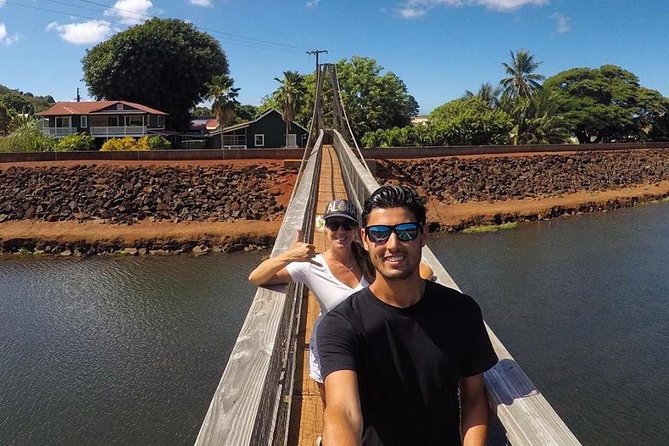Best Travel Telescope for Portability
When you’re looking at the best portable telescopes, it can be difficult to know which is right for you. And when you want to get some good views of the night sky, it is important you have the best telescope you possibly can.
Although there are many expensive, stationary types of telescopes that can be used from home, there are other portable and lighter models that are easy to use while traveling.
They generally won’t be powerful enough for in-depth viewing of planets, but they should be perfect for wide field viewing and lightweight enough to take with you anywhere. So, let’s take a look at the best travel telescopes on the market today.
Aperture: 90mm | Focal Length: 1250mm | Focal Ratio: f/14
When it comes to portable telescopes, the Celestron NexStar 90SLT is really hard to beat.
You can use the wireless remote included to locate different stars, moons and planets – you can just enter certain objects (like the Milky Way) and the computerized system will find them.
This is a Maksutov Cassegrain telescope that has a solid enough aperture and a long focal ratio, which means that it is designed for getting a wide view of the night sky.
It’s a great telescope for any amateur astronomer. The mount has a built in bubble level, which is necessary to maintain balance. This is easier in heavier models of telescope, but with light telescopes a sturdy base is important.
Overall, it’s a great travel telescope that’s extremely easy to pack up and take away with you on a camping trip or journey outside of the City.
- Computerized system: This makes it extremely easy to find the Orion Nebula and other celestial objects in the night skies.
- Great price: You can get this telescope for a reasonable price, which offers excellent value for money.
- Battery powered: The telescope uses 8 AA batteries, so you’ll need plenty of batteries or a battery pack for long late nights.
- Need an extra Barlow: You may need additional accessories, as it comes with two eyepieces but combining these with an extra Barlow lens would be better for bright views with more detail.
This is the best Celestron Travel telescope when it comes to packing light but still having enough power for viewing objects.
Sale Celestron – NexStar 4SE Telescope – Computerized Telescope for Beginners and Advanced Users,Fully-Automated GoTo Mount,SkyAlign Technology,40,000+ Celestial Objects, 4-Inch Primary Mirror,Orange
- NEXSTAR 4SE COMPUTERIZED TELESCOPE: Celestron’s iconic orange tube telescope combines 4″ Maksutov-Cassegrian optics with updated technology and the latest features for an amazing stargazing experience for beginners and experienced observers alike.
- 4-INCH APERTURE MAKSUTOV-CASSEGRAIN TELESCOPE: 4-inch primary mirror packs enough light-gathering ability to deliver impressive views of the Moon and planets, along with deep-sky objects like the Orion Nebula, while retaining a compact form factor.
- FULLY-AUTOMATED GOTO MOUNT: With a database of 40,000+ celestial objects, NexStar SE’s GoTo mount locates and tracks objects for you. It’s the perfect telescope for astronomy beginners. NexStar SE is also compatible with StarSense and SkyPortal WiFi.
Aperture: 102mm | Focal Length: 1325mm | Focal Ratio: f/13
The NexStar 4SE shares the heritage of its sibling, the C90, which is basically a scaled up version. This scope has a fast spherical primary mirror with an aluminized “spot” that serves as a secondary mirror on the corrector.
Despite this small secondary mirror, this scope does offer great optics and a long focal length, so it is well suited for planetary, lunar, or double star gazing.
This scope has an auto orientation feature that allows you to view the image right side up rather than an inverted view on typical Cassegrains. The NexStar 4SE has a single 1.25 inch or 25 mm single Plossi eyepiece.
This is great for low power, but you may want to add a 32 mm Plossi for a wide field of view. Further high power or medium power eyepieces will allow you to get the most from your 4SE.
The NexStar 4SE is a little small, and with its 102 mm focal length, it is better suited to planetary astronomy, so you will be limited to looking at the brightest deep sky objects. You will also get access to the NexStar catalog, which contains 40,000 objects.
However, with the small aperture of the 4SE, you’re not likely to explore all of these objects, but it will help you to become more familiar with the night sky and develop your interest in the hobby.
This is typical of a Maksutov Cassegrain telescope, as they’re pretty expensive – you can look at the 5, 6 or even 8SE if you have a little more cash to spend.
The 4SE has a fairly steady mount, and the scope does have a Vixen dovetail creating the flexibility to use other mounts. The small buttons of the hand controller can be a little fiddly, and you will need to set the time and date each time you use the scope, and you will need to put fresh batteries in to prevent it from cutting out and needing to be reset.
Since the mount requires eight AA batteries, you will need to have confidence that they have enough juice. Though it’s not a pure Celestron travel scope, it’s a great choice if you’re getting started with basic astrophotography and need a little more quality for planetary viewing.
- Great Viewing: The scope has an ample 102 mm aperture, which should be good enough if you’re trying to get a good view of planets, the moon and more deep space objects.
- Fantastic Focal Length: The scope offers a 1,325 mm focal length, which means that it is best for those looking for a wide field of view picture of the night sky. Higher magnification would be necessary to see planets up close (like if you’re trying to see the Rings of Saturn).
- Lack of Accessories: Unlike many of the other models on our list, the 4SE is lacking accessories included with the telescope.
- Not Priced Competitively: The scope is in an awkward price range that is not quite beginner, but it lacks the features advanced users would expect.
For new astronomers, the Celestron NexStar is the best around if you’re looking to easily find new DSOs. The fact that it’s on a computerized mount makes star-finding really easy, though it’s not exactly ideal for compact travel.
Sale Orion 09007 SpaceProbe 130ST Equatorial Reflector Telescope (Black)
- This 5.1″ aperture reflector telescope gathers an ample amount of light for great views of the planets and Moon, as well as brighter galaxies, nebulas, and star clusters
- Compact optical tube design for easy portability and fast f/5 focal ratio for pleasing wide-field performance makes the SpaceProbe 130ST EQ a very versatile telescope the whole family can enjoy
- Sturdy equatorial telescope mount and adjustable tripod allows manual slow-motion tracking of celestial objects as they appear to migrate across the night sky
Aperture: 130mm | Focal Length: 650mm | Focal Ratio: f/5
The GoScope is an 130mm reflector telescope that makes a great way for beginners to start exploring the stars. Although it has a very simple design that looks like a decoration or toy, this is actually a powerful tool that can focus light with up to 80 percent efficiency.
This scope is equipped with two eyepieces; a 25 mm and a 10 mm, which provide total magnification of 35x. Although the eyepieces have been designed with beginners in mind, the scope does offer a great field of view with its large aperture.
This will be more than sufficient to see the finer details of Saturn’s Ring, Jupiter’s moons, or the craters on the Moon. Since this is a small telescope, the GoScope is better suited to view bright sky objects, but on a clear night, you will still be able to see sky objects such as star clusters.
All of the optical elements for this scope are fully coated to ensure more efficient light focus. It also features an Altazimuth dovetail mount, to further increase precision when tracking planetary objects.
This mount also features an additional tripod slot. This tripod slot is compatible with most camera tripods, so you may not need to buy additional equipment – it comes with a smartphone adapter, collimation cap and various different accessories too.
This is a great scope for planetary and celestial viewing with an EZ Finder II scope and air spaced doublet optics. With a weight of just 24.2 pounds, this is a great scope for use at home or when traveling.
- Great Image Quality: With an 130 mm aperture, this scope can offer great image quality.
- Great Value: For an Orion telescope, this is a highly affordable model, with a compact and lightweight design.
- Tripod: Although the scope is supplied with good eyepieces, the other included kit is limited quality, including no tripod.
- Equatorial Mount: While this is a popular feature for beginners, this mount may be disliked by more advanced users.
This reflector telescope could be a perfect addition to your back garden if you want something fun to play with. It’s a good choice if you’re looking for a compact telescope that requires little optical tube assembly, so you can get it up and working in no time.
Aperture: 70mm | Focal Length: 4000mm | Focal Ratio: f/5.71
As the name suggests, the Celestron 21035 has been specifically designed as a portable telescope. It has a f/5.7 70mm achromatic refractor that only offers sharp images at 40x, but this should be sufficient for most traveling use.
This is a refractor telescope as opposed to a reflector telescope. What does this mean? Well, typically refractors are much easier to set up and don’t require collimation, which is one of the problems with reflectors like a Dobsonian or Newtonian telescope. This is one of the main things people look for in portable scopes.
The lens does lack the quality of more expensive refractors, but this is reflected in the price tag. Since many people are loathed to spend a fortune on a scope that could be easily damaged when out and about, there will be some compromises when you’re buying at this price point.
The scope does have a plastic dew shield to protect your equipment from dew accumulation. It is also supplied with two eyepieces, SkyX software, a padded backpack, and an aluminum tripod, so you have everything you need when you’re out and about.
The included eyepieces provide 40x, and 20x magnification, but can be supplemented with additional pieces if you want to expand the range of this scope. The included Sky X software is also a handy tool if you want to learn more about the stars and planets with a 10,000 object database, 75 enhanced images, and printable sky maps.
All of these items perfectly fit in the backpack, with a weight of just 3.3 pounds. So, you won’t feel encumbered as you hike to find the perfect spot for sky gazing. Some people argue that this scope has a cheap look due to some of the parts being plastic, but it is a resistant telescope that can withstand regular use.
Although the tripod is a little lightweight for less than perfect surfaces and the finder is a little fragile, as a package, the Celestron 21035 is a fantastic option if you’re looking for an astronomy travel telescope.
- Totally Portable: With the supplied backpack that is ideal for carrying
the scope and accessories, the entire kit weighs just 3 pounds. - Great Value: Since many people don’t want to spend a fortune on a travel telescope, this scope is an excellent value proposition.
- Durable: Despite some of the plastic components, this scope is durable.
- Light Tripod: The tripod is a little light, so it will work best on an even surface
- Limited Range: Can only handle 40x magnification; pro stargazers may want more
- Plastic focuser: The plastic focuser and finder are a little delicate.
The Celestron Travelscope offers the best handheld telescope currently on the market. It’s super cheap, but it’s still good enough to get a clear view of the night sky, which may make it the best portable telescope.
Celestron – PowerSeeker 114EQ Telescope – Manual German Equatorial Telescope for Beginners – Compact and Portable – BONUS Astronomy Software Package – 114mm Aperture
- PERFECT BEGINNERS TELESCOPE: The Celestron PowerSeeker 114EQ is an easy-to-use and powerful telescope. The PowerSeeker series is designed to give the first-time telescope user the perfect combination of quality, value, features, and power.
- MANUAL GERMAN EQUATORIAL MOUNT: Navigate the sky with our Newtonian Reflector telescope. It features a German Equatorial mount with a slow-motion altitude rod for smooth and accurate pointing. Adjust rod to desired position, then easily secure by tightening cross knob.
- COMPACT AND PORTABLE: This telescope for adults and kids to be used together is compact, lightweight, and portable. Take the telescope to your favorite campsite or dark sky observing site, or simply the backyard.
Aperture: 114mm | Focal Length: 900mm | Focal Ratio: f/8
Another Celestron model that makes our list of the best travel telescopes is the PowerSeeker. This is a remarkably easy to set up scope that requires no tools. You simply attach the tube to preassembled tripod and mount. This means that you can be using your scope in just a few minutes of getting to your viewing spot.
This is a Newtonian scope that provides a longer focal length with a far shorter tube. This means that you can easily carry your scope and tripod in your car and still have lots of room for cameras or even a midnight picnic.
Everything needed to get started is supplied. The kit includes a 3x Barlow lens and two eyepieces for different magnification and a copy of Starry Night software that has a database of more than 10,000 celestial objects. There is also a lightweight, aluminum tripod with equatorial mount that allows for slow motion control to better track the stars.
This scope features a 127 mm aperture, which is one of the largest you will find on starter scopes. This is ideal for beginners or intermediate astronomers as it allows for close up detail of the Moon, star clusters, brighter planets, and nebulae. This aperture is supported with good quality optics that are fully coated for additional brightness and clarity.
However, the potential drawback is that at this price point, you can’t get everything. In this case, the Celestron 127EQ PowerSeeker uses a spherical mirror instead of a parabolic mirror, which does make optical aberrations more common. However, this scope does have an erect image diagonal, which does counteract this somewhat.
Plus, you will need to collimate or realign the mirrors of this scope, which can take a little practice and confidence. This can be a little scary for beginners, and you will find limited information supplied by Celestron with this scope, so you will need to do some research to get the hang of it.
- Simple Assembly: The design of this scope means that it has super easy assembly, which is handy when you’re on the go
- Offers Power and Portability: Unlike many travel telescopes, this scope has an ideal blend of power, portability, and size.
- Awesome Images: With its 127 mm aperture, the PowerSeeker can deliver fantastic images.
- Requires Collimation: Since this is a Newtonian reflector scope, it will require aligning, which can be a challenge for beginners.
- Light Tripod: The aluminum tripod may be a little light for some users
The Powerseeker series offers a cheap yet easy to use option for those looking for something easy to put up. Although it’s quite large it’s extremely portable, and it’s ideal if you want to maintain a good image quality.
The Regal M2 100ED is the next generation of Regal F-ED spotting scopes, but it is light and portable enough to make it a candidate as one of the best travel telescopes. This scope can be used day or night to enjoy sharp images, whether you want to stargaze at night or bird watch during the day.
This scope has all of the advanced features that are usually limited to more expensive scopes, such as ED (Extra Low Dispersion) glass. The Regal M2 has a magnesium alloy body that decreases the overall weight of the scope by as much as 14 percent compared to the previous models. There is also an upgraded dual focus mechanism to help you bring your subject into focus faster.
The M2 is fully waterproofed and has been nitrogen purged to prevent the scope from fogging. It is also supplied with a carrying case, so you can take it anywhere. The included T-Adapter also makes it easy to attach your camera to capture any great images you find.
Along With the ED lenses that provide increased resolution and accurate color reproduction, the M2 has proprietary XLT coatings on the lenses to maximize light transmission to further increase the resolution and brighten the images.
The kit also includes a 22-67x zoom eyepiece that provides adjustable magnification for general viewing or detailed close viewing as needed. However, since this scope has a 1.25 inch standard mount, you can also add more eyepieces if you want to further expand the magnification.
The twist up eyecup ensures correct positioning whether you view with or without wearing glasses, while the sliding sunshade has a sighting line to not only keep moisture off the lens, but also reduce stray light.
- Durable Body: The magnesium alloy body provides for a lightweight yet durable scope.
- Adjustable Eye Cup: The rubber eyecup is highly adjustable, making it comfortable even if you wear glasses.
- No Tripod: Since this is meant as more of a spotting scope, it is not ideal for stargazing. This includes the fact that a tripod is not included.
- Higher Price Tag: While this scope does have some nice features, it is one of the more costly options on the market.
If you’re looking for a high grade spotting scope that can easily be used for astronomy on a whim, then the Regal is worth checking out. It’s great if you want to spot bright objects in the sky without having to get yourself an expensive telescope.
With so many models on the market, it can be a little tricky to make a final purchase decision.
So, we’ve compiled a helpful guide to help walk you through the process of choosing the best travel telescope for your requirements and preferences and what you should consider.
The aperture is the diameter of the optical component of the scope, and the level of light captured is directly related to the aperture size. So, the aperture affects the clarity directly. However, if you want to travel with your scope, you will need to take the aperture size into account. Although a larger aperture means better images, but this also increases the size and weight of the telescope. You will need to balance aperture and scope size, but generally, 6 inches will offer solid clarity and a compact design. When we have the aperture and the focal length of our telescope, we can then work out its focal ratio. The focal ratio is simply the ratio between the focal length and the aperture, so if you have these two measurements, then it is quite easy to work out.
Many people consider magnification to be the most important aspect of a telescope, but this is not the case. Although magnification is vital, the magnification capabilities will be based on the eyepiece. So, you can easily change the magnification level simply by changing the eyepiece for a more powerful one. Plus, if you have a small aperture, having high magnification will leave you with blurred images.
As we’ve touched on above, eyepieces are a crucial component for the magnification of your scope. Every scope produces a small image in the barrel for the eyepiece, and your eyepiece acts a magnifying glass to see this image up close. Shorter focal length eyepieces allow you to get greater detail in your image. So, you can compensate for a lower magnification scope with a shorter focus eyepiece. Most scopes are supplied with one or two eyepieces, but you can supplement this with additional ones to extend the range of your scope.
The mount can be crucial for your overall astronomy experience. There are two types of mount; altazimuth and equatorial. Altazimuth mounts are considered a standard mount, allowing you to move your scope left, right, up, and down, but it will not automatically track. However, this type of mount tends to be more compact and affordable. Equatorial mounts are designed to follow the sky’s rotation. Although this type of mount tends to be more expensive, it can make it far easier to follow the map when you’re navigating the stars.
Another essential consideration for your new travel scope is the build quality. While it may be tempting to opt for the most rugged model that can cope with being taken out in your car or carried in your backpack, this will add to the weight, which can make it far more difficult to carry and set up. So, there is a balance between the durability and weight. Fortunately, there are some smaller, cheaper scopes that can not only be great for stargazing but are light and portable enough to take to any viewing spot.
High quality optics and a lightweight design are essential for travel telescopes – the ability to move your scope anywhere and avoid light pollution is essential.
Many of these types of telescopes have a compact size, yet can still offer high quality magnification. So, whether you’re an outdoor lover who wants to discover the night sky from your favorite spots, or you lack the conditions at home to use a telescope, there’s something for all.
Buying a telescope can be a daunting process, particularly if you’re new to the hobby. However, when you also add portability into the equation, it can be even more confusing.
There are some fantastic models on the market, as we’ve detailed here. There are travel telescopes at all price points, so you can choose one to suit your preferences and budget.
You may need to make some compromises, finding a balance between budget and features to get the features you’re looking for without breaking the bank.
While it may be tempting to ignore the price tag and go for a top of the line telescope, it is better to start with an inexpensive, good beginner model.
You can always add accessories or upgrade your scope to a more advanced model once you’re sure that you will continue with the hobby.
You’re better off getting a high end telescope and then adding accessories like your Barlow lens and 10mm and 25mm eyepieces later on when you can afford them.
It is also worth considering that you’re likely to be taking your telescope out and about, so you don’t want to spend a small fortune, only to find that you drop it as you’re hiking to find the perfect viewing spot.
Fortunately, there are scopes at a decent price point that are supplied with carry cases or backpacks that ensure that your scope and all your accessories will be safe and secure when you’re out and about.

![[New!] Sushi Making Experience All You Can Eat Japanese Snack!!](https://odysseymagazine.com/wp-content/uploads/2024/03/1_new-sushi-making-experience-all-you-can-eat-japanese-snack.jpg)



